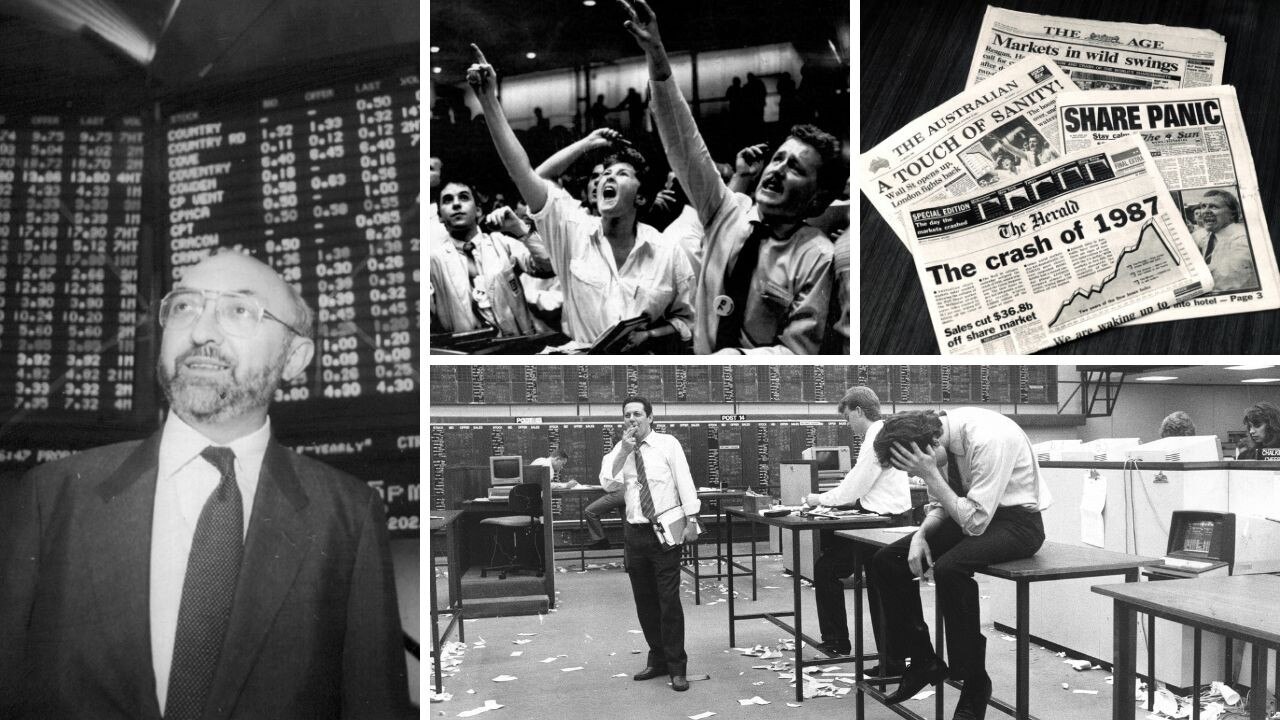Wall Street provides timely reminder of reality
A sharp drop on Wall St should be a timely reminder to Australia that everything we do or try to do is ultimately hostage to the actions of three men who live far from our shores.

Terry McCrann
Don't miss out on the headlines from Terry McCrann. Followed categories will be added to My News.
The sharp drop on Wall St overnight Wednesday should be a timely reminder that there is a reality – indeed, the reality – out there, over and above and away from big spending budgets and fantasy fiscal and economic forecasts.
As I’ve been explaining, we can huff and we can puff, we can stick out our chests and think we are controlling our present and our future, but in truth, everything that happens in Australia and everything that we do or try to do is ultimately hostage to the actions of two chairmen and one (sock-pocket) president - the nearest of whom is 6000km north of Darwin and is not going to be (re)visiting Australia anytime soon.
He is of course Chairman Xi; the other two are in Washington – Fed Chairman Powell and ‘President’ (in name) Biden, and more particularly whomever is ‘operating’ him.
The proximate cause of the 2 per cent drop on Wall St – let’s not get carried away, it wasn’t a plunge, only a drop from extraordinary record or near-record highs – was a sudden and, to the ‘experts’, a ‘surprise’ surge in inflation.
US inflation surged in April. Over the 12 months to March it had been 2.6 per cent. Suddenly it popped up to 4.2 per cent over the 12 months to April – the highest it’s been since September 2008.

That’s a rather ‘interesting’ month; it was the month that Lehman went down, sparking a certain event. Not predicting, just noting.
With inflation popping up to 4.2 per cent, suddenly the idea of accepting an interest rate of just 1.6 per cent or so on a 10-year government bond maybe didn’t look that appealing.
Not with the more immediate prospect that the Fed might have to ‘think’ about raising its official rate from zero – something that would help push bond rates higher and share prices lower.
The key take-out from the day’s events, though, was that Wall St dropped ONLY the 600 points. Given the rise and rise of recent weeks, it was basically saying it didn’t ‘believe’ the 4.2 per cent and/or it trusted in the Fed not believing the 4.2 per cent.
Or even if the Fed believed the number, it wouldn’t act on it.
The justification? That inflation surged because of food and energy – and the rocketing price of used cars. Sound familiar? Feel familiar?
So if you take them out – after all, who needs food, energy and transportation - the ‘real’ inflation rise was far more subdued. Northing to see here; move on, or rather don’t ‘move’ on.
The big point to understand is that the “not doing” by that trio – like the Fed not raising rates anytime soon; China not cutting off buying our iron ore and paying ridiculously high prices to boot – will shape our future just as much as “doing” actions by them.
The Fed has a supposed inflation target of exactly 2 per cent, compared with our Reserve Bank’s 2-3 per cent range.
Our RBA says it won’t consider hiking until inflation is “sustainably” in the 2-3 per cent; the Fed says it wants inflation (moderately) above 2 per cent for “some time” before it hikes.
But importantly, the very highest any single one of the Fed governors and Fed bank presidents saw inflation being – not just this year, but all the way through both 2022 and 2023 – was 2.6 per cent.
Yet just two months after making those predictions, inflation has already popped way above that at 4.2 per cent.
Now you can dismiss it as a one-off; or ‘adjust out’ inflation in food, energy (and used cars), but what if it actually persists?
The Fed would either have to abandon its job or have to deliver savage and – to the ‘experts’ - shock rate hikes.
But there’s no inflation here, of course.
Originally published as Wall Street provides timely reminder of reality



